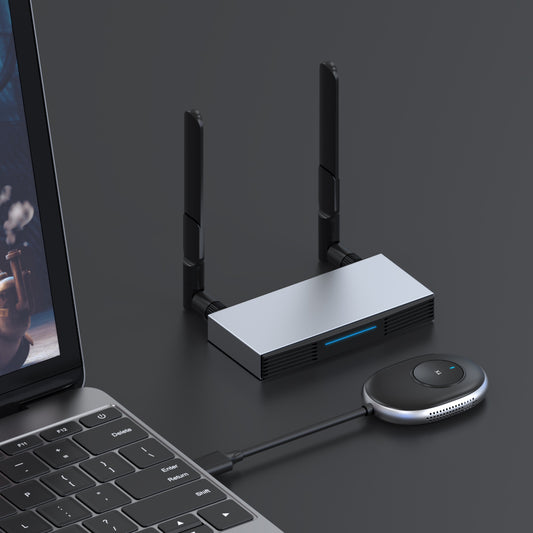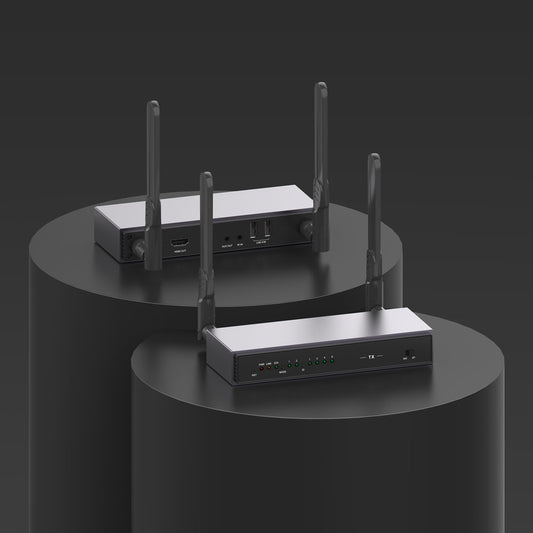
11 Digital Signage Best Practices
We live in a technologically advanced society where almost everything is digitized. A century ago, no one could have predicted touchscreen phones, and 20 years ago, no one could have predicted digital displays. However, they are now one of the most effective ways to inform customers. Easily developing and managing materials is one of the best things about digital signage. If you are not careful and produce a mess of material, it will not help the success of your organization. When creating information for your company or organization's signage, it is important to consider accessibility and aesthetic attractiveness. By using the following digital signage best practices when creating and developing signage projects, you can ensure that your visitors are attracted in the best way.
1. An Easy-To-Read Copy
Legible content makes it simple for your readers to quickly and clearly see and understand your message from a distance. It's crucial to remember that the majority of your sign's viewers will be standing at least 5 to 10 feet away. Designing for this viewpoint will therefore be a crucial component of your message's overall success. Here are some general guidelines for formatting the content on your digital signage best practices.
Optimal font size: make sure your content can be read far away. This will make it easier for people to understand your point of view quickly. No matter how far away your viewer is from the screen, different font sizes are appropriate. In lobbies and offices, observers are usually located 5 to 10 feet from your sign. In restaurants and data centers, observers may be 30 feet away. Use the following table to select the best font size for your viewing relationship:
Keep it brief and stick to the 3x5 Rule. A maximum of three lines containing text, each with no more than five words, or five paragraphs of text, each one with no more than three words, may be displayed on your display.
Employ sans-serif typefaces instead of serif fonts, which are only appropriate for lengthy paragraphs and never belong on digital signage best practices. The best fonts to choose are Bold face Sans-Serif styles, since they are the simplest to read quickly. For designing digital signs, Helvetica, Arial, Verdana, and Open Sans are all excellent font choices.
Employ no more than two fonts when creating designs. More and more contrast you add to your design by using multiple typefaces, the busier and more challenging it will look to be to read.

2. Set Specific Objectives
Setting project goals is the first step in developing content for digital signs. Making an informed decision will be challenging if there is no clear direction, therefore being detailed about the result in advance is crucial.If this step is done, it will be one of digital signage best practices.
3. Create A Content Strategy Plan
You must spend the opportunity to map out your content marketing strategy now that you have concrete goals in order to produce content that is successful, engaging, and relevant.
To achieve this, you must choose whether you want to produce static or dynamic content.It is essential to become digital signage best practices.
4. Less Is More
Never let reading your signage feel like a chore.Finding best practices in digital signage is not an easy task. Keep your message brief and simple by sticking to a little amount of words and trying to rewrite it several times.This will guarantee that your audience comprehends your content and is able to respond appropriately.
One strategy for doing this is to use the 3x5 rule. This guideline basically indicates that either three lines with five lines or five paragraphs with three words should be present in your text.
As an alternative, you might present your message using an information hierarchy. This approach necessitates a large heading, brief content, and sizeable CTA.This enables digital signage best practices.
5. Designing Accessible Spaces
2010 saw the release of the Americans with Disabilities Act (ADA) Guidelines for Accessible Design by the Department of Justice. All electronic and informational devices must comply with this law's accessibility requirements for people with impairments. This category includes digital signage. To make sure your signage complies with ADA standards, there are some things to keep in mind.Digital signage best practices must cater for all.
Font Size
The size of the text should allow for easy reading at a fair distance. Set up an LCD screen with several font sizes and consider reading it from different distances to determine the ideal font size your your design.
Your text's color should stand out dramatically from the background. This will make it easier for people who are blind to read.
Interactive Directions
The height of every piece of functionality must be somewhere around 36 and 42 inches. This requires that every button, keypad, and interactive feature on your Display fit within this area.
While creating content for wayfinding, take accessibility into account. Provide space for accessible entrances, stairs, etc.
Screen Display
Any display that is deeper than 4" is prohibited by the ADA. Every object that protrudes from either a wall and then into a course of travel must comply with this criteria. Make sure that the depth of your Display is 4" or less. There are numerous large-format displays that are 3.5" wide and comply with ADA requirements.
6. The Pictures Tell The Story
A very potent element of your design are your pictures. They should never take away from your message by using convoluted or unrelated visuals.
Design graphics or videos at a size that preferably corresponds to (or, if necessary, exceeds) the output device's resolution while making them. Lower quality content will appear excessively pixelated and distorted on your display.
Design with popular aspect ratios, such as 4:3, 16:9, and 2:1, so that you may quickly adapt your ideas for new projects.
Avoid clogging up your display by avoiding the temptation to stuff it full with anything and everything.
Make sure your message is compelling, obvious, and succinct when you're employing your Display to persuade your audience to do a particular action. Be exact and provide details (dates, times, and locations).
8. Plan The Right Message Loops
You must take into account the location where your material will be presented in order to determine the suitable times for your messaging loops. You should deliver succinct messages (around 5-8 seconds long) to an audience that is in motion.
Keep in mind that your message won't fully register with your audience until they have seen it several times.
To keep your content current and relevant, you'll additionally need to make sure to refresh it. Decide how frequently you want to change advertising messages (daily, weekly, or monthly), and don't undervalue the impact of changing the background or color scheme.
9. Develop, Measure, And Learn
The best digital signage technique you can follow is to experiment and learn from your mistakes. Uncertain if something will succeed? Try it out for a day, see what works and what doesn't, then adjust as needed for the following day. You may fine-tune and adapt your communication to their needs and location by using the construct, measure, learn technique. Your message will always be better and have the greatest impact if you constantly iterate!
10.Height
The minimum height for digital signage is eye level. To accommodate the environment and intended purpose, you can go higher. The display's angle can be crucial, especially if you're using it at a higher height and need to tilt it downward. Make sure to hang the display for touch kiosks at a height that allows for user interaction.
11. Use Suitable Stabilizing Slave Tools
AV over IP solutions are widely used in digital signage, video matrix switching and video wall processing.if you want digital signage best practices , ProScreenCast SC03 is the best chose.









